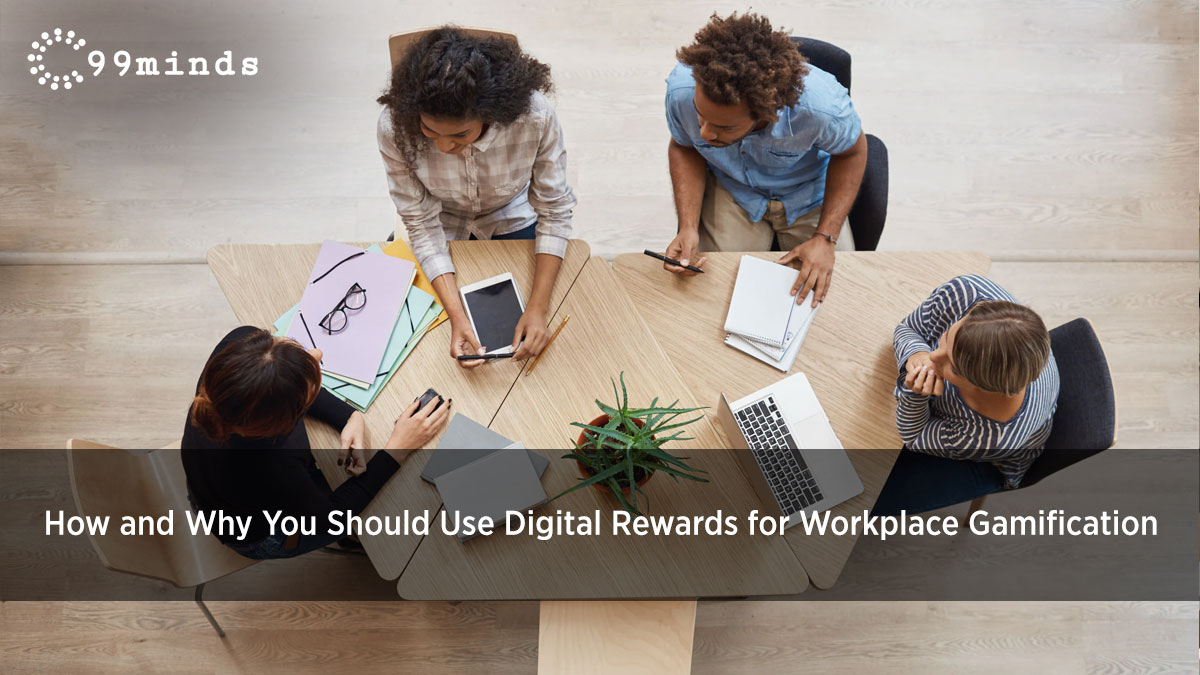
Who doesn’t love games? What if you could motivate your employees using workplace gamification? With Millennials and Gen Z “hogging” the workforce, you shouldn’t be surprised employers are using games to keep them motivated and engaged. It seems like a natural progression.
79% of employees say gamification has improved their motivation and gives them a sense of purpose. Gamification can be used for a variety of objectives. It can be tweaked to suit your specific needs, from encouraging a specific behavior (hitting the deadlines on time) to making work engaging.
The term gamification was coined in 2002. Gaming elements were added as a part of non-gaming activities to increase engagement. Charles Coonradt figured that if employees managed to turn work into play, their performance and motivation levels would skyrocket. His book “The Game of Work” says that if the techniques used for sports or games were applied in a work environment, employees would show more spirit.
Let’s look at a few reasons why you should gamify the workplace.
The well-being of your employees is directly proportional to the work environment. For example, gamification removes favoritism by looking at objective performance in an employee’s work.
In gamification, tasks are presented in a manner that lures employees with challenges. They are designed to complete tasks and give a sense of accomplishment. It could be because of an uptick in the progress bar or getting a new badge. All of this helps the employee find their true potential.
Most gamification features have a competitive element inside them. It makes the employees compete against each other and bond while learning on the job. Gamification makes them feel like they are a part of something bigger than themselves.
Gamification helps you stand out in the eyes of your employees, competitors, and customers. Gamified programs can be extensively used as an internal communication tool to attract investors. Communication is vital to every business, and gaming dynamics make it easier.
Every employee should periodically undergo training exercises. Some of these programs can be dull and uninspiring. The employees forced to undergo those training sessions barely scrape through the post-course tests.
Companies can use gamification to make the learning process much more engaging. They are less likely to forget the information gathered during the classes when it is highly engaging.
There are endless ways to gamify the workplace and benefit from it. It gives your employees a sense of purpose and a renewed motivation to get work done. The gamification techniques will inspire your employees to provide your clients with beautiful experiences.
It is a gamification method that boosts competition at the workplace in a fun way. Since there is only one winner, you can offer a bumper reward. The leaderboard inspires friendly competition while helping employees give their best for an exciting reward.
These are trackers which measure the progress of your task and encourage completion. Profile badges can be assigned to those who are a part of the task. Employees will feel satisfied as they see the progress in the bar and automatically put their best foot forward to complete the task.
A completeness tracker is great for big projects and will take a considerable amount of time. Employees can extensively use it during the onboarding process or for challenges that involve several steps.
The peer recognition system allows colleagues to applaud each other’s success and show gratitude for their contribution. This gamification technique creates a culture of appreciation since it gives people an intuitive means to praise their work colleagues.
An easy way to make training engaging for your employees is through scavenger hunts. It can also be a team-building activity where employees are divided into different groups to complete tasks. It increases camaraderie and increases engagement toward the task.
It indicates that an employee has reached a certain point in the project or task. Levels could also denote someone’s stature in the workforce and their achievements.
Using badges gives employees recognition for their contribution. The badges can be assigned for things like completing tasks ahead of schedule or being the highest revenue-generating salesperson in the team. Employees will proudly display their badges, and it is an opportunity for them to flex their contribution. Offer rewards every time someone collects a badge, motivating your employees even more.
Another gamification method that borrows from a traditional game is roleplaying. Here, employees can choose their favorite avatars. The avatars will get to practice real-world business scenarios in an entertaining environment. The roleplaying method motivates employees to solve problems and react quickly. It can be extremely useful for training new employees or reinforcing business concepts for the workforce.
Let’s look at a few best practices to make gamification work for your company:
Gamification helps employees align their goals with the company. It initiates conversations with the leadership team about performance and targets. The badges, leaderboard positions, peer recognition, and progress tracking are good motivators for employees. If you want to increase the stakes, allow employees to get their rewards in gift cards.
Digital gift cards deliver the power of choice for your customers. Since they can be redeemed immediately, digital gift cards incentivize employees to exceed expectations.
Gamification can seem like a terrifying proposition since it is new, and most of us are unfamiliar with implementing it in organizations. But if you look at it carefully, you don’t have to change your work or make drastic adjustments in your day-to-day operations. It twists the traditional method of learning and working by adding gamified elements to it. It is also a great way to improve your company’s image since it makes the office feel like a wholesome place.